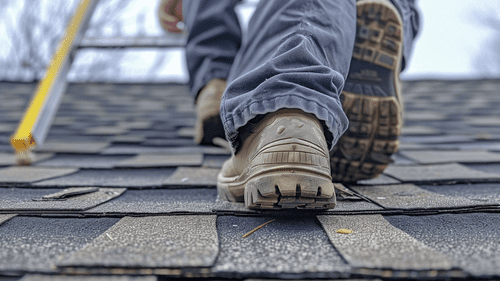Introduction: Understanding the Importance of Your Roof Insurance Claim
When your Texas roof takes a hit—whether from a severe storm, hail, or the toll of time—the actions you take next can make a huge difference in protecting both your finances and your peace of mind. At Eternal Roofing, we know Texas weather can be unpredictable, and navigating the roof insurance claim process can feel overwhelming. How do you make sure you're prepared to tackle the often complex steps involved? Our guide is here to simplify the journey, from documenting the damage to successfully securing your claim, so you know what to expect at every stage.
Understanding the details of your insurance policy and how filing a claim might affect your premiums can be tricky, especially in a state known for its intense weather. Why do rates sometimes increase after a claim, and what proactive steps can you take to minimize this? We’ll answer these questions and more, equipping you with strategies to manage potential financial impacts. Plus, we’ll highlight the importance of detailed documentation and regular roof maintenance to keep your Texas home safeguarded and your investment protected over the long haul.
Preparing to File Your Roof Damage Claim
When you encounter roof damage, the steps you initially take can significantly influence the outcome of your insurance claim. It's vital to document the damage meticulously. Begin by taking high-resolution photos from various angles, ensuring you record the date and extent of the damage. If it's safe to do so, include close-up shots to capture specific damage details, providing clear evidence for your claim. Keeping a record of all communications with your insurance company is also beneficial.
Understanding the specifics of your insurance policy is crucial. Familiarize yourself with terms like 'ACV' (Actual Cash Value) and 'Replacement Cost', which determine how your insurance company calculates the payout. Knowing whether your policy covers events like 'Named Storms' or 'All Perils' can also impact the claim process. This knowledge prepares you for discussions with your insurer and helps set realistic expectations about the coverage you might receive.
The Impact of Filing a Claim on Your Premiums
Filing an insurance claim can lead to an increase in your premiums. Homeowners typically see a 9-15% rise in their insurance costs after a single claim. This increase is part of the insurer's strategy to offset the risk of future claims. However, strategies exist to mitigate these increases, such as increasing your deductible, which can lower your monthly premium. Additionally, some insurers offer 'claims-free' discounts; maintaining a period without claims can qualify you for reduced rates.
If your premiums increase significantly, it's beneficial to compare quotes from different insurers. Market competition means you might find better rates with similar coverage elsewhere, which can be a compelling reason for your current insurer to offer more competitive pricing.
Navigating the Claims Process: A Step-by-Step Guide
Initiate a claim as soon as possible after the damage occurs. Contact your insurance provider to report the damage and inquire about the next steps. This call is also an opportunity to verify your coverage details and any specific documentation the insurer needs.
During the inspection phase, an insurance adjuster will visit your property to assess the damage. It’s important to have all your documentation ready and any temporary repairs made to prevent further damage. Be present during the inspection to discuss your concerns and the observed damage with the adjuster.
Submitting the required documentation promptly and accurately is crucial. This includes your detailed photos, a list of damaged items, receipts for any repairs already done, and a copy of the police report if the damage was caused by vandalism or theft. Ensuring completeness and accuracy in this documentation can significantly speed up the claims process.
Special Considerations for Wind and Hail Damage
Wind and hail are leading causes of roof damage, accounting for 34% of all property claims. Understanding the implications of these specific types of damage is crucial. For instance, hail can cause subtle, yet significant damage that might worsen over time, leading to leaks or structural weaknesses.
When documenting wind or hail damage, include:
- Timestamps on photos to validate the occurrence date relative to the storm.
- Any reports from weather services confirming the storm's occurrence in your area.
- A list of all areas inspected, noting specific damages like missing shingles or dents on metal surfaces.
This detailed documentation is essential not only for filing your claim but also for any future inspections or repairs. It serves as a solid foundation for your claim, highlighting the direct impact of the storm on your property.
Conclusion: Securing Your Roof's Future
Navigating the complexities of roof insurance claims is crucial for protecting both your property and financial well-being. By understanding your policy details, documenting damage meticulously, and engaging proactively with your insurance provider, you can streamline the claims process and potentially mitigate the financial impact of increased premiums. Remember, detailed documentation and prompt action are your best allies in ensuring a fair assessment and adequate compensation for roof damage.
The journey from damage to resolution involves not only recovery but also strengthening your home against future adversities. As you move forward, consider how your claim experience shapes your approach to home maintenance and insurance decisions. Isn't it reassuring to know that with the right knowledge and preparation, you can not only restore your roof but also enhance your home's resilience? Let this experience empower you to take charge of your home's safety and security, knowing you're well-prepared for whatever the skies may bring.







